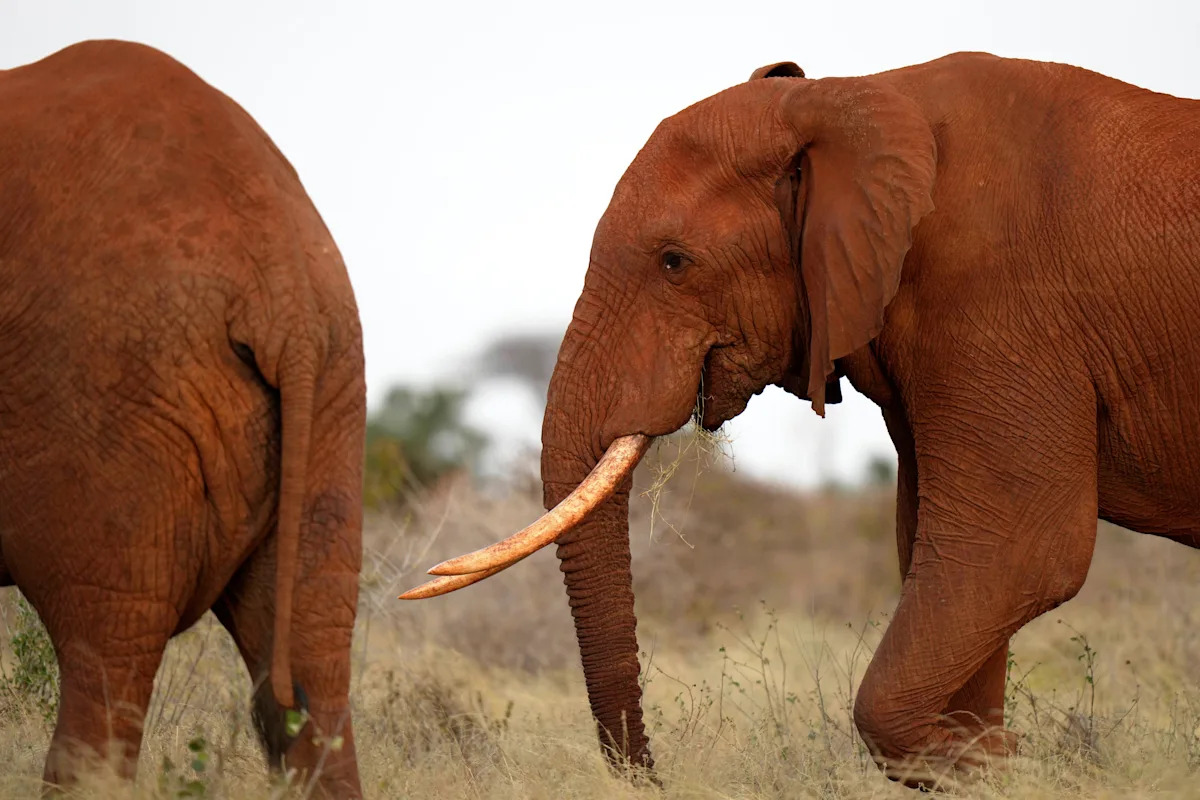Farmers in the Taita hills of southern Kenya are turning to innovative solutions to combat the threat posed by elephants, which often raid crops and can cause serious injury or death. The approach combines beekeeping and the cultivation of sesame, a crop that elephants tend to avoid, allowing farmers to protect their livelihoods while coexisting with wildlife.
Richard Shika, a 68-year-old farmer, recalls a harrowing encounter with an elephant in his maize field. “One time, I was trying to chase away an elephant, but it turned and charged me,” he recounted. Shika narrowly escaped injury, but his experience highlights the dangers that many local farmers face. In a tragic incident two years ago, a three-year-old girl was trampled to death by an elephant in Taita Taveta County, illustrating the human-elephant conflict that is a growing concern in the region.
The Taita hills are adjacent to Kenya’s largest national parks, with Tsavo East National Park located less than 10 kilometers (6 miles) to the east and Tsavo West National Park encompassing the area to the north, west, and south. These parks have no fences, allowing elephants to migrate freely. As human settlements expand, they increasingly intersect with the migratory paths of these animals. “The places and infrastructure that we humans develop hinder the migratory routes and paths which elephants used to take,” explains Yuka Luvonga, a researcher with the conservation organization Save The Elephants.
Elephants consume around 150 kilograms (330 pounds) of vegetation daily, making it difficult for farmers to keep them away from their crops, especially during dry seasons when food is scarce. Shika notes the intelligence of elephants, stating, “They will try touching a fence, and once they realize that it is not electrified, they charge through.” The Kenya Wildlife Service and conservation organizations estimate that between 30 and 35 people are killed each year in elephant-related incidents across the country.
While some communities resort to retaliatory measures, such as poisoning or spearing elephants, farmers in Taita Taveta have adopted alternative methods. One successful strategy involves the use of beehives. “Elephants don’t like getting stung by bees, so they keep away from areas where hives are,” Shika explains. With assistance from Save The Elephants, he is among 50 farmers who have suspended beehives from wires around their farms. If an elephant makes contact with the wire, the hives sway, disturbing the bees and effectively repelling the elephants. Shika reports earning nearly $250 from honey sales this year, demonstrating both the economic and protective benefits of this approach.
In addition to beekeeping, changing crop types has proven effective. Elephants are particularly fond of maize and watermelon, but they tend to avoid sesame, which emits a scent that repels them. Gertrude Jackim, a 70-year-old farmer, has transitioned from growing maize and green grams to sesame, stating, “Look at me, I’m aging, so I can’t fend off the elephants or chase them away.” Jackim is one of 100 farmers supported in this initiative, which she describes as essential due to the increasing destructiveness of elephants in recent years.
These farming practices that deter elephants, such as beekeeping and sesame cultivation, have significantly improved coexistence for farmers like Shika and Jackim. Conservationists are optimistic that these strategies will foster a more harmonious relationship between humans and elephants in a region where conflicts had previously reached alarming levels. “We have to live harmoniously with these elephants,” says Luvonga. “Creating awareness and sensitizing the communities to change their attitudes towards these animals is crucial for the future.”
By implementing these innovative techniques, farmers in Taita Taveta are not only safeguarding their crops but also contributing to the preservation of wildlife, ensuring that both people and elephants can thrive in this shared environment.
